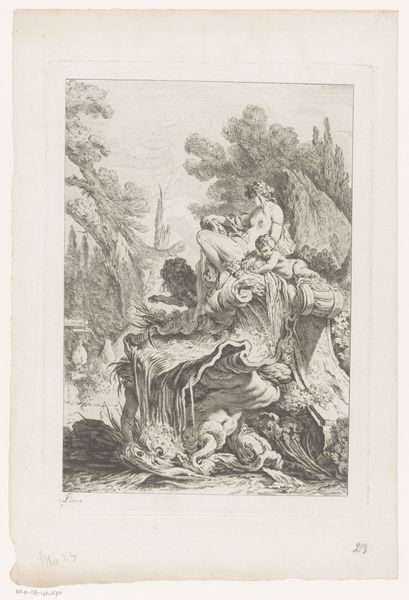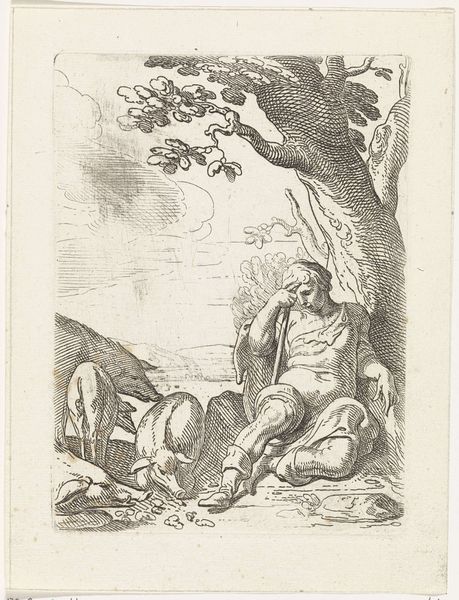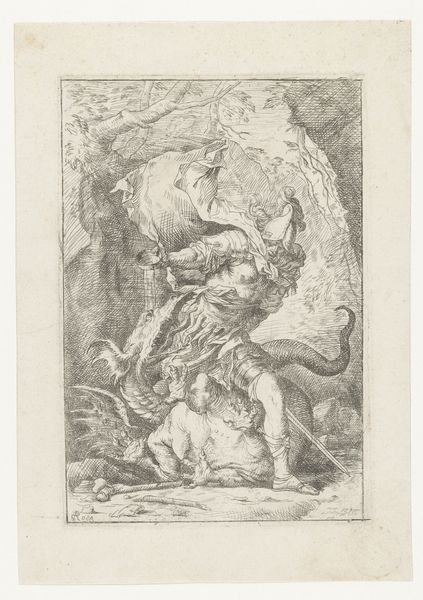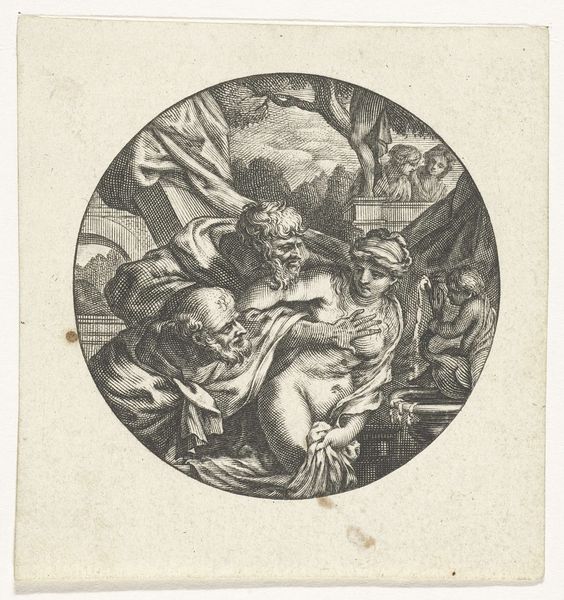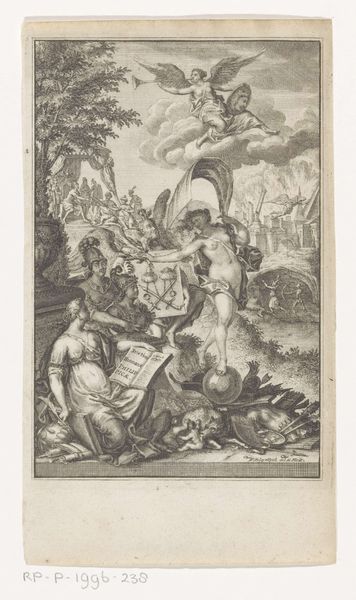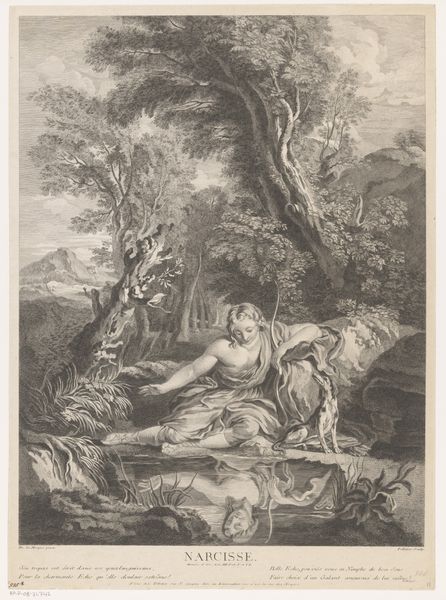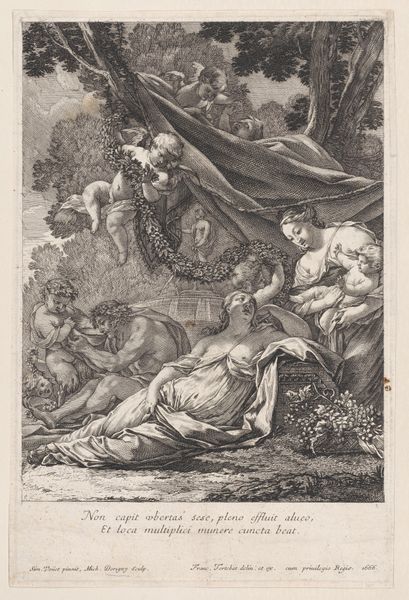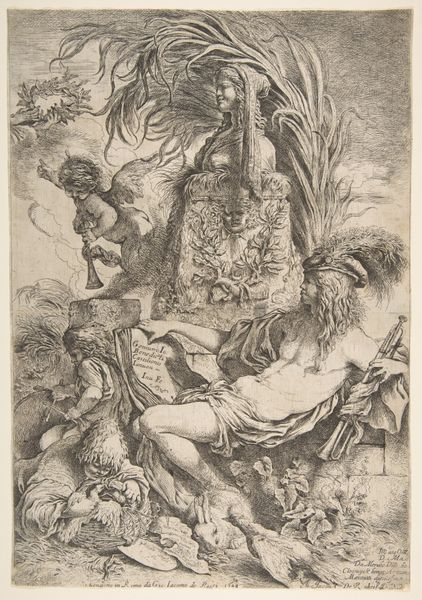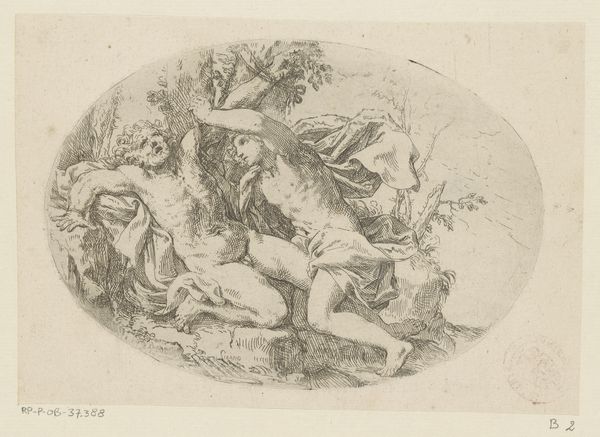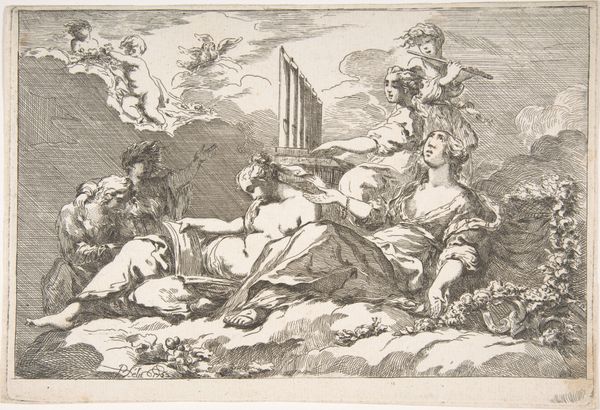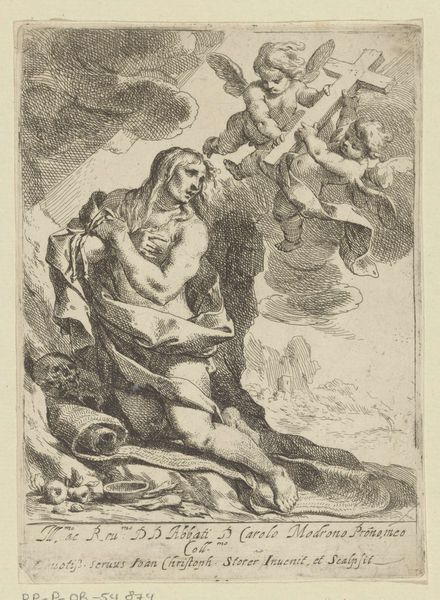
etching
#
allegory
#
baroque
#
etching
#
landscape
#
classical-realism
#
figuration
#
genre-painting
#
nude
Dimensions: height 392 mm, width 283 mm
Copyright: Rijks Museum: Open Domain
Editor: So, this is "Fountain with Naiad Startled by a Lion," an etching by Jean Baptiste Marie Pierre from around 1740, found at the Rijksmuseum. I am really intrigued by its swirling composition and how the lion seems almost to emerge from the foliage. What catches your eye, looking at it through a formalist lens? Curator: The first thing I notice is the pronounced diagonal that governs the entire composition, from the rearing lion at the upper right, descending through the cascade of water and terminating at the reclining naiad. This confers a dynamic, almost theatrical quality upon the work, wouldn't you agree? Editor: Absolutely. It almost feels like a snapshot of a fleeting moment. What about the interplay of light and shadow? I mean, is it used in a specific way to enhance the dynamism, as you put it? Curator: Precisely. Note how the artist uses dense, intricate hatching and cross-hatching to build up areas of deep shadow, especially around the base of the fountain and in the turbulent foliage. These darker areas serve to frame and accentuate the lithe, exposed forms of the naiad, as well as drawing our gaze upwards to the more brightly rendered lion. There's a distinct visual hierarchy established here, dictating our reading of the image. Do you find the textures contribute similarly? Editor: I think so. It is amazing to see such variety within a monochromatic work. The contrast between the smooth skin of the naiad, the rough stonework and the almost bristly mane of the lion – all created through the mastery of etching. I also now noticed the strong sense of depth created with the trees fading into the distance! Curator: Indeed. And consider how the serpentine curves throughout – in the naiad’s pose, the lion's tail, even the cascading water – contribute to a sense of rhythmic unity, a visual echo connecting all the disparate elements within the composition. What have we learnt from our analysis? Editor: That even what appears to be a chaotic scene can be very deliberately constructed through formal choices. Curator: Agreed. A deeper appreciation for the intrinsic qualities of the work, and the visual architecture created within it.
Comments
No comments
Be the first to comment and join the conversation on the ultimate creative platform.

